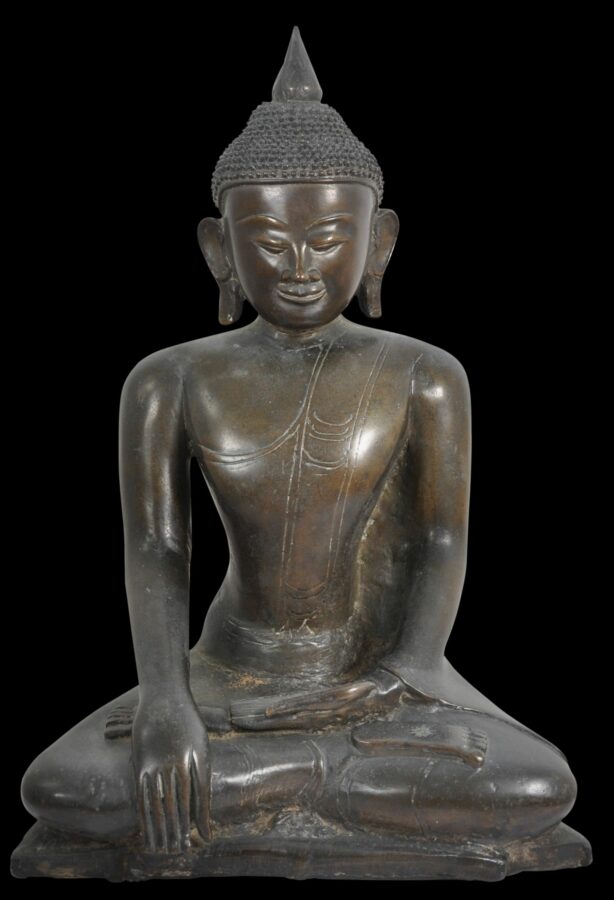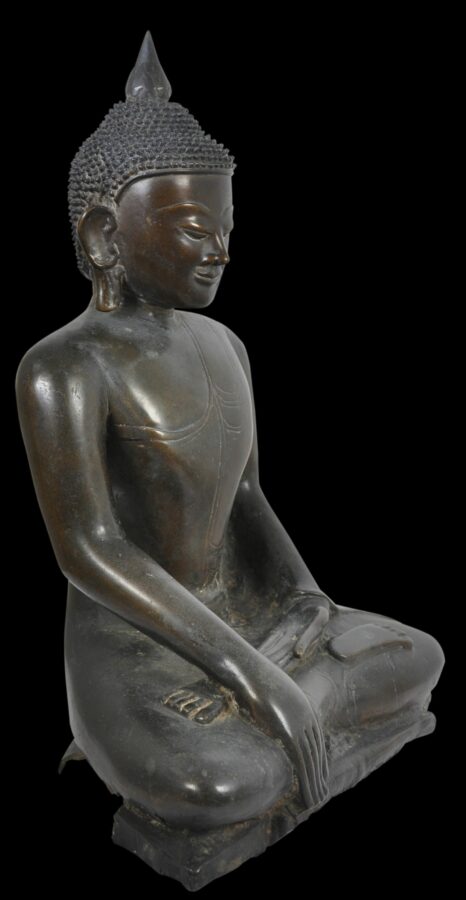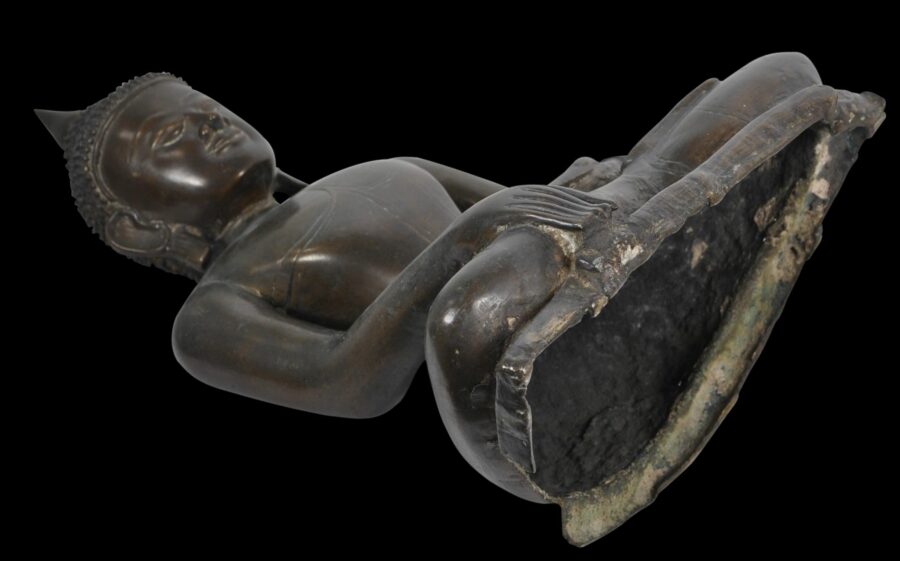This finely cast bronze image shows the Buddha sitting in bhumispara (‘calling the earth to witness’). It shows elements of late Pagan influence.
The image has a pleasing, rounded face, with downcast eyes and a gentle smile. The earlobes extend almost to the shoulders. The robe covers his left shoulder. The robe edge is defined on the rear of the image with engraving. A narrow band separates the hair from the forehead. A rounded usnisha is topped by an elongated lotus bud finial. The hairstyle is akin to neat, horizontal rows of peppercorns. The fingers are elongated and of equal length. The feet are upturned and flat.
The elongated bud-like jewel to the top of the Buddha’s head is also peculiar to Burmese and Shan images and seems to have its origins in seventeenth century representations of the Buddha (Lowry, 1974).
The ‘calling the earth to witness’ pose, refers to the occasion when the Buddha, seated in meditation under the Bodhi tree on the evening before his enlightenment, is challenged by the demon Mara to prove that he had given alms. The Buddha touched the ground with his right hand and asked the earth to bear witness to his past good deeds (Fraser-Lu & Stadtner, 2015, p. 152).
The base has some loss and there is an old but stable crack to the lower back, but the image sits evenly.
The Buddha came from an English estate which had inherited it from a forebear who had served as a country manager in India in the 1920s-1960s for a UK company.
References
Fraser-Lu, S., & D.M. Stadtner, Buddhist Art of Myanmar, Asia Society Museum, 2015.
Lowry, J., Burmese Art, Victoria and Albert Museum, 1974.
Somkiart Lopetcharat, Myanmar Buddha: The Image and its History, Siam International Books Company, 2007.









